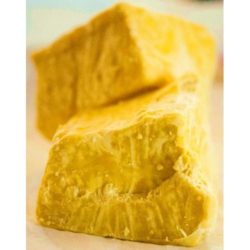Shea Butter is one of the best ingredients for your skin. If you haven’t started using in your skincare routine, read on to more about it and why you should include it to your routine.
Shea Butter is a nourishing, rejuvenating and moisturizing ingredient, a reason it is used in all Aya Naturals products.
Where Does Shea Butter Come From?
Shea Butter is derived from Shea Tree or Karite Tree and is used not just for the moisturizing properties, but also to curb numerous skin and hair issues. It is used in number of skin and hair care products. Lotions, Creams, Body Butters, Lotions, Hair Creams, you name it, they all have Shea Butter.
Vitellaria paradoxa (Karite Tree) is a tree that’s native to Africa from where Shea Butter is extracted. The fatty oil from this tree is solid at room temperature and that’s what we call Shea Butter. The fat is light colored and rich in linoleic acid, stearic acid and oleic acid among other things.
The best thing about Shea Butter is that it melts at body temperature and is a soft butter. This makes using it quite easier and is a great healing and moisturizing aid. The rich antimicrobial and anti-inflammatory properties are used for treating several issues along with other ingredients and oils. Do you know it is edible?
Interesting Facts About Shea Butter
Shea Butter tree can be found all through West Africa from Senegal to Sudan and up until the foothills of Ethiopia. According to African History, Cleopatra used it for her skin and hair care and bottles of this butter was transported to her. It is said that Queen Sheba used Shea Butter, as well.
African Kings’ coffins were made using wood from Shea Butter tree and the butter was used for treating skin and hair issues.
It is widely used all through Africa and said to protect Africans from scorching summer and dryness of hair and skin.
Nowadays, modern methods like Hexane filtering and Clay Filtering are used to extract Shea Butter,
In Northern Nigeria, Shea Butter is used with Palm Oil for cooking.
It is widely used for its regenerative, healing and rejuvenating properties – to curb ageing signs and look younger.
Types of Shea Butter
There are different types of Shea Butter – the one that looks green or yellow is the form that’s closest to its natural form. This is usually the raw form that’s then processed to get other variations.
Raw Shea Butter is usually extracted through manual efforts and is natural. It retains most of the nutrients and is really beneficial. It is filtered using cheesecloth or other means that can alter the texture or smell slightly. It is then poured into molds for setting. It is graded from A – F based on the quality.
Refined Shea Butter is processed after the filtration step and is deodorized using chemicals or by airing. It is then bleached so the butter is white and often, additives are added for aroma or for texturizing the butter – to make it smoother. However, these processes does affect the nutritional value of the butter and it is no longer as good as raw Shea butter.
Refined shea butter, on the other hand, is the processed form. Apart from the filtration process, it also undergoes a deodorizing process by airing or usage of chemicals. It is also bleached to make the butter whiter. Addition of additives is common to add a suitable scent and increase the shelf life (preservatives) of the butter. All of these processes make the butter white and very smooth. A major disadvantage of using the refined version of shea butter is that all the processing it goes through reduces its nutritional value. Not just this, there are versions that are refined even more further and called highly refined or ultra refined Shea Butters.
Needless to say, that’s why they use Raw and Unrefined Shea Butter in all Aya Natural products. So, if you are planning to buy Shea Butter, make sure it is raw, unrefined, unprocessed and organic. Don’t worry, that’s not all. We will be back with more on Shea Butter for you soon.

